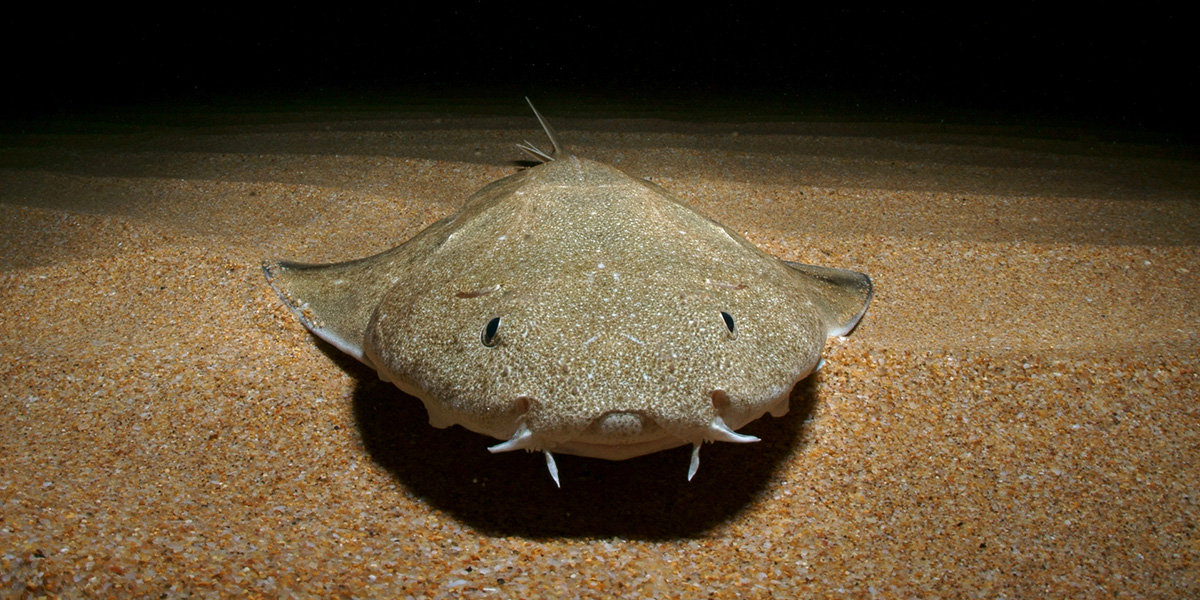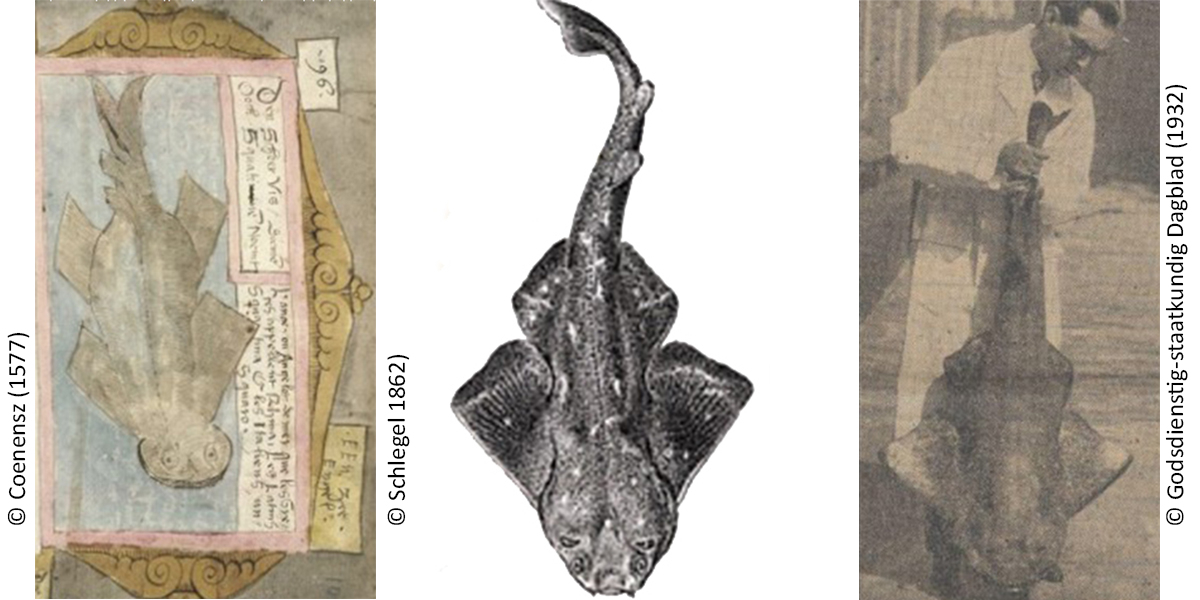The North Sea’s forgotten angels

Critically endangered
People travel the world, in a search for ever more exotic and rare animals in remote locations. WWF-Netherlands instead decided to turn its focus on regions closer to home and the hidden and often forgotten gems of Dutch wildlife. In a country as connected with water like the Netherlands, the focus turned to marine wildlife and the worldwide endangered Angelshark.
‘This icon was once an integral part of the North Sea’s ecosystem’
Less than a century ago, the large predator lurked for prey from the bottom of the North Sea’s coastal zones. NIOZ researcher and lead author Roeland Bom points to the so-called ‘shifting baseline syndrome’ to explain that only a few people seem to remember this iconic species in these waters. Bom: ‘This syndrome occurs when generations of fishermen or conservation biologists accept the status of a system at the start of their observations as its ‘natural baseline’. That becomes their intuition of how the system is supposed to be.’ According to the authors, successful nature protection and restorations depend on a true historical baseline. Bom: ‘That baseline needs to include top predators from earlier centuries.’
Delving into history
For starters, it is important to understand the existing, often implicit, search image. Which picture do we have in mind of the intended nature that we want to restore or rebuild? The information that feeds this baseline often doesn’t date back farther than fifty years, let alone a century. Large predatory fish such as rays and sharks are therefore either missing or very rare and the linked ecosystem requirements are left out. The authors argue that for a true attempt at restoring what once was, the baseline needs historical grounding.

The team of conservationists and researchers delved into library archives, fish surveys, and museum catalogues, looking for the presence of Angelsharks in Dutch waters. How common was this large predator? And when and why did it disappear from Dutch waters? The historical sources show that the sharks were rather common in the North Sea in earlier times and used the coastal regions as its nursery grounds. The introduction of steam trawlers at the beginning of the 20th century marked the fast decline of the population, eventually leading to its complete disappearance from the North Sea ecosystem. In 1973, the angels of the North Sea are mentioned one last time when fishermen haul one on deck. From that moment on Angelsharks faded from our memories. The baseline had shifted.
Contact
Anieke van Leeuwen: anieke.van.leeuwen@nioz.nl
NIOZ Communication: communication@nioz.nl or mare.pit@nioz.nl
Publication
Roeland A. Bom, Monique van de Water, Kees C. J. Camphuysen, Henk W. van der Veer, Anieke van Leeuwen
The historical ecology and demise of the iconic Angelshark (Squatina squatina) in the southern North Sea.
Marine Biology (2020), doi: 10.1007/s00227-020-03702-0
Link
https://doi.org/10.1007/s00227-020-03702-0
WWF article on the first findings of the research in 2019 before publication. (Dutch)